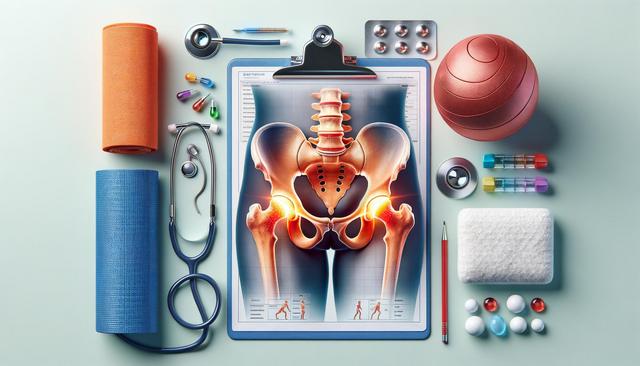Understanding the Causes of Hip Pain
Before exploring solutions, it’s important to understand the possible causes of hip pain. Doctors often emphasize that identifying the root cause is essential for effective treatment. Hip pain can stem from various sources, including joint issues, muscle strain, tendonitis, bursitis, or underlying conditions such as arthritis. In some cases, problems in the lower back or knees can radiate pain to the hip area, making diagnosis more complex.
Common causes include:
- Osteoarthritis, especially in older adults
- Hip labral tears from sports or repetitive movement
- Tendon inflammation from overuse
- Injuries such as fractures or dislocations
Doctors typically recommend a thorough physical exam and imaging tests like X-rays or MRIs to determine the cause. Understanding the origin of the pain helps in choosing the right treatment approach—be it conservative management or surgical intervention.
Exercise and Stretching for Hip Relief
Physical activity is often one of the first recommendations doctors make for managing hip pain—when performed correctly. Regular, low-impact exercises can help strengthen the muscles around the hip joint, improve flexibility, and reduce stiffness. However, it’s essential to avoid high-impact movements that may worsen the pain.
Recommended exercises include:
- Gentle walking or swimming to maintain joint mobility
- Seated leg raises to strengthen thigh muscles
- Hip bridges for glute activation
- Stretching exercises like the piriformis stretch or hip flexor stretch
Doctors often advise working with a physical therapist to ensure exercises are done safely and effectively. Stretching should be done regularly, ideally after warming up, to avoid injury. Even light yoga routines can contribute to better hip function over time.
Weight Management and Lifestyle Adjustments
Carrying excess body weight can significantly increase the stress on hip joints, especially during activities like walking, climbing stairs, or standing for long periods. Doctors frequently highlight weight management as a key factor in reducing hip pain, particularly when osteoarthritis is involved.
Lifestyle adjustments that can help include:
- Incorporating a balanced diet to support joint health
- Reducing prolonged sitting or standing periods
- Using ergonomic furniture to support natural posture
- Wearing supportive footwear to reduce joint stress
Simple changes, such as avoiding deep chairs and using a cane or walker if needed, can reduce strain on the hips. Doctors also recommend taking breaks throughout the day and avoiding repetitive movements that may contribute to pain flare-ups.
Medication and Non-Invasive Treatments
In some cases, lifestyle and exercise changes may not be enough on their own. Doctors may recommend over-the-counter or prescription medications to manage inflammation and discomfort. Commonly used medications include nonsteroidal anti-inflammatory drugs (NSAIDs) and corticosteroid injections for more severe inflammation.
Non-invasive options doctors may suggest include:
- Topical creams with pain-relieving ingredients
- Heat and cold therapy to reduce stiffness or swelling
- Ultrasound therapy or electrical nerve stimulation
These treatments are often used in conjunction with physical therapy to offer more comprehensive relief. Always consult a healthcare provider before beginning any new medication or treatment plan to ensure it’s appropriate for your condition and doesn’t interfere with other medications or health issues.
When to Seek Further Medical Intervention
While many forms of hip pain can be managed at home or with conservative measures, certain symptoms warrant immediate medical attention. Doctors caution that ignoring persistent or worsening hip pain can lead to complications or more invasive procedures down the road.
Signs that indicate the need for further intervention include:
- Severe pain that limits daily activities
- Swelling or redness around the hip joint
- Inability to bear weight on one leg
- Signs of infection, such as fever and chills
In such cases, doctors may refer patients to orthopedic specialists for further evaluation. Depending on the diagnosis, treatments may range from advanced physical therapy techniques to surgical options like arthroscopy or joint replacement. Early intervention often results in better outcomes and quicker recovery times.
Conclusion: Taking Control of Hip Health
Managing hip pain involves a combination of understanding its cause, making lifestyle changes, and following doctor-recommended treatments. Whether it’s through exercise, weight management, or professional physical therapy, taking proactive steps can significantly improve quality of life. If you’re experiencing ongoing hip discomfort, consult a healthcare provider to create a personalized plan that suits your needs. Timely action and consistent efforts can make a meaningful difference in reducing pain and restoring mobility.


